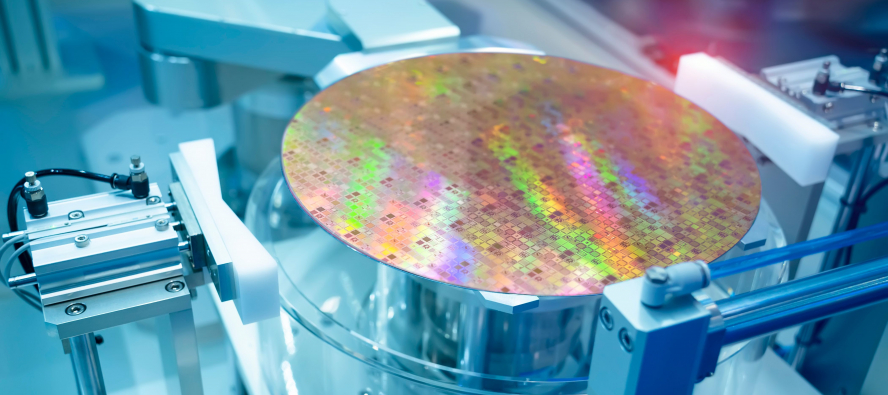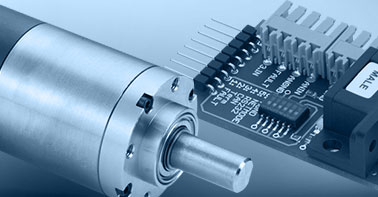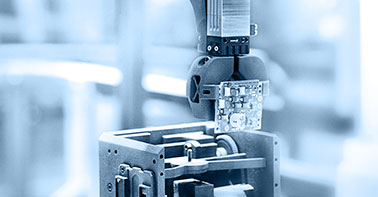- info@ems-ltd.com
- 0118 9817391
Home > PR > Manufacturing microelectronics
Manufacturing microelectronics
17/04/2023 - Speedy, precise production on a micro scale
17th April 2023
Filed under:
Ems, Faulhaber, Manufacturing

McKinsey & Co predicts that the semiconductor industry will be worth a trillion USD by 2030. Present in almost all electronic devices, these tiny chips are integral to a modern, digital world. But with their small size and rising demand, how can we ensure their manufacture is done with both precision and speed? Here, Dave Walsha, sales manager at DC motor supplier EMS explains.
Semiconductors are at the heart of enabling a connected, digital world. But supply has been problematic, with sudden spikes in demand making it hard for manufacturers to keep up. Volkswagen believe that the automotive industry will continue to experience a shortage until at least 2024. And with estimates that semiconductor production will need to be doubled to keep up with future demand, it's clear semiconductor manufacturers have their work cut out when it comes to meeting market expectations.
But it isn’t as simple as just building additional plants. New chip factories cost billions and take several years to build, making them valuable future investments, but offering little help to remedy present shortages. Therefore, the priority must be to make the most out of existing facilities, boosting speed while maintaining high quality. So, how can we achieve this?
Semiconductor fabrication
First, we need to consider how semiconductors are manufactured. Though the exact method will differ depending on foundry and chip application, the general process is the same.
The first step is preparing the wafers. These are cut from an ingot of highly purified silicon, before being polished until smooth. A thin layer of film, typically a metal oxide, is deposited onto the surface of the wafer to protect it and form a base for the rest of the circuit.
A light-sensitive coating known as a photoresist is then applied to the wafer. Using a lithography machine, ultraviolet light is shone onto the chip through a reticle. This is effectively a template holding the desired pattern of the circuit and allows the pattern to be transferred onto the chip. Any degraded resist is removed, and the remainder is used as a template for etching, thus forming the first layer of the circuit.
These steps are repeated with metal and insulating films to form the electrical connections and insulators between devices in the circuit.
Once the die is finished, a diamond saw cuts out the individual chips from the wafers. Thin wires are cut and added to form the electrical connections before the chips are safely enclosed in a protective shell, typically made of synthetic resin. These packaged chips are now complete, ready for shipment and mounting onto PCBs.
High demands
In every step of the chip’s manufacture and final assembly, automation is at the centre of movement. And the demands placed on automated machinery are high.
For instance, robotic arms tasked with assembling chips must operate with precision at every stage, whether that’s ensuring the circuit layers line up perfectly on top of one another or applying just the right amount of resin. The hair-thin wires forming the electrical connections must be measured, cut and placed accurately to ensure minimal wastage and a high-quality finish. Yet they must also be handled with care, as their fragility means they are easily bent or broken.
The challenge, therefore, is finding a suitable drive system that offers this high degree of precision. The motors must have a high reliability, with a long service life. The sensitivity of the semiconductor chips means that they should also operate with minimal vibration to avoid any deviation from the desired circuit pattern.
FAULHABER’s BX4 series of brushless DC servomotors is ideal for such applications. Offering a dynamic start/stop operation with minimal noise and vibration, the BX4 range is ideal for such sensitive applications. The absence of brushes reduces the level of required maintenance, and results in a more energy-efficient motor. Encoders can be incorporated with the motors to guarantee accurate position and placement, helping to minimise errors and further improve semiconductor quality and yield.
With increasing digitalisation and new applications being found for electronics every single day, the demand for semiconductors is unlikely to slow. With the right technology on the assembly line, keeping the manufacturing process running smoothly doesn’t need to be a headache, and will support manufacturers to meet growing demand.
- Categories / Tags
- 1024...SR
- AEMT
- AESL
- Acceleration
- Agriculture
- Agritech
- Autoclave
- BHS
- BHT
- BHx
- BLDC
- BP4
- BRC Series
- BX4
- BXT
- BeBionic
- Bearings
- Bespoke
- Brushed
- Brushed DC Motors
- Brushless
- Brushless DC Motors
- Brushless Dc Motors
- Brushless Motor
- Buhler
- Building Automation
- COVID
- CXR
- Catalogue
- Company Update
- Controller
- Coreless
- Coventry
- Custom
- Custom Design
- DC Motor
- DC Motor Supplier
- DMN
- Dc Motor
- Design
- Dimatech
- Drones
- EDS
- EMS
- EMS News
- EV
- Encoder
- Ewellix
- Exoskeleton
- Expo
- FAULHABER
- Factory
- Faulhaber
- Flat
- GPT
- Galil
- Gearhead
- IEF3
- IMC
- Industry 4.0. Blog
- Inspection
- KAG
- LL06
- LM
- LVC
- Laboratory Automation
- Linear
- Linear Actuator
- Logistics
- M50
- M80
- MC3
- Maintenance
- Manufacturing
- Mechatronics
- MedTech
- Medical
- Medical Devices
- Medical Imaging
- Medtech
- Merkel
- Motion Control
- Motor
- Neurosurgery
- New
- Nidec
- Nidec Servo
- Optical
- Pain Relief
- Piezo
- Piezomotor
- Pipeline
- Planetary
- Planetary Gearheads
- Point Of Care
- Precision
- Precistep
- Process
- Production
- Quickshaft
- Robot
- Robotics
- Robots
- SKF
- SR Series
- Samples
- Small DC Motor
- Software
- Space
- Sponsorship
- Stepper
- Stepper Motor
- Stepper Motors
- TMS
- Testing
- Trade Show
- 1016
- 1660
- 1935
- 2017
- 2018
- 2020
- 2021



